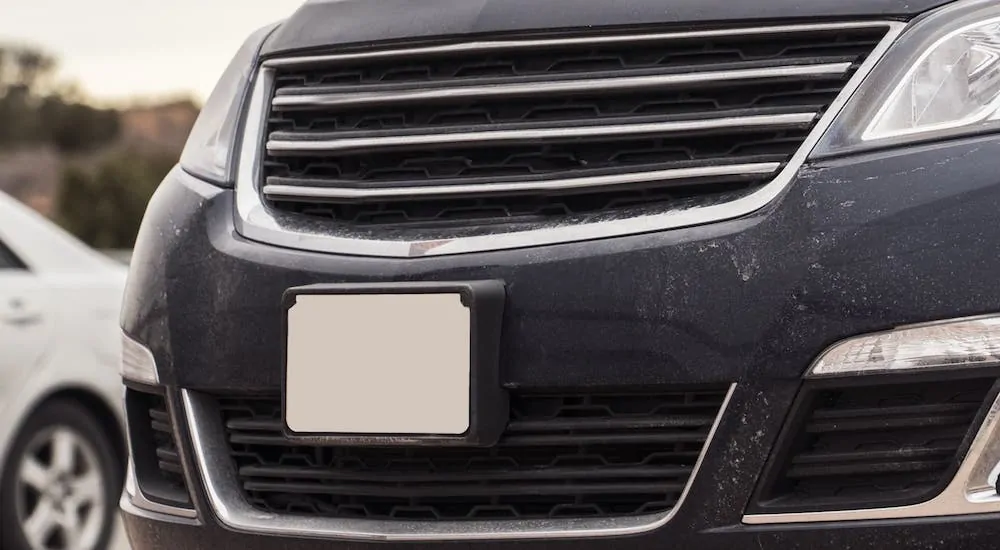Buying a new or used car from a dealership can be a lot of fun. Looking at all of your options, figuring out which model is best for you, and taking that test drive to get your first feel of the perfect car at a used car dealership near you are all great moments that can make the process more rewarding than you might first expect. But, to be fair, there can also be some hassles that drain a bit of the enjoyment out of the entire thing––especially if you live in a state that doesn’t allow temporary plates!
Temporary plates should, in theory, be a simple concept that functions the same from one state to another in the US. Sadly, as with so many things when it comes to government regulations and red tape, that is not the case. For the most part, the idea behind and function of temporary plates or tags is actually quite simple, and it works well. But there are some outliers that muck up the whole thing, and if you’re in certain states (looking at you Massachusetts), then your life can get pretty complicated pretty quickly.
So let’s take a look at what you need to know about temporary plates before you head to a used car dealership near you.
What are Temporary Plates?
We’ll start this off simply and get into more complicated issues a bit later. Temporary plates or tags are, in essence, just temporary versions of the license plates that are required on vehicles throughout the US. These license plates, also known as vehicle registration plates, are proof that a vehicle is registered with the state in which its owner lives, and that any necessary fees have been paid to keep it registered in that state.
A standard license plate is all well and good for when you’re driving around on most days, but when you get a new vehicle (even a used one that’s new to you), then there’s bound to be some period of time between when you take possession of the car and can get it registered. That is what temporary plates are for––they are usually printed on paper and placed where the standard plates would otherwise go. This provides proof of short-term registration and that you purchased the vehicle legally, giving you a little time to have the vehicle properly registered and get the real license plates.
Getting Temporary Plates
Usually, in states that allow temporary plates (which is to say, most states that abide by the rules of common sense), car dealerships will be authorized to provide their customers with temporary plates or tags. When you finish buying or financing a vehicle, the dealership will print out or write out temporary tags based on information they receive from the state’s motor vehicle registry, department, or bureau. Depending on other state requirements, you likely need to provide proof of insurance prior to the dealership placing temporary plates on the vehicle.
Some states might also allow other designated individuals or companies to provide temporary plates for customers. In general, however, this is usually handled by a dealership that sells cars, trucks, SUVs, and trailers. The state licensing or motor vehicle department can also issue temporary plates. This is usually done when you register your vehicle and need to wait until your permanent plates are sent to you so you can drive until then.
Does Every State Allow Temporary Plates?
No, not every state issues or allows temporary plates to be used by its residents. Fortunately, the majority of states in the US do allow temporary plates to be issued by registered car dealerships and similar businesses, making life simple for drivers in their state. Even those states that do not issue temporary plates will typically accept a temporary tag from another state when someone is driving through, so long as the driver is a resident of a different state.
California was, notoriously, one of the exceptions to the temporary plate rule for many years. In the past, a simple paper “license” was placed where the plates should go––often advertising the dealership that sold the vehicle, rather than an actual temporary tag. This was legal for about 60 days, but people would often continue to drive with these dealer “plates” for years, rather than attaching their official plates to try to avoid parking tickets and red light cameras.
As of 2019, however, California joined most of the country and began issuing temporary plates on vehicles bought from a dealership. Some other states, however, continue to resist this push into the modern era, most famously Massachusetts. Oh, Massachusetts…
The Massachusetts Problem
While California didn’t issue temporary plates from its dealerships for a long time, their workaround was simple. Even though it could be abused by drivers (and it certainly was), it didn’t actively make the lives of California drivers more difficult. Massachusetts, on the other hand, has gone a different way with it.
You see, Massachusetts doesn’t issue temporary licenses or tags either, but they don’t give you some simple paper from a dealer––they give you nothing. You have to have your plate from registering the vehicle at the Massachusetts Registry of Motor Vehicles (RMV), or you are driving your new vehicle illegally. Dealerships in Massachusetts cannot issue you a temporary plate, and dealers in neighboring states can provide a temporary tag for their state, but Massachusetts law strictly doesn’t recognize them. Fun, right?
The good news is that this is mostly a problem for Massachusetts residents. If you live in a different state and you’re just passing through with temporary tags from a used car dealership near you, then you should be okay. You might still get pulled over for having them, but so long as you can show that you live in a different state, you will probably be fine.
Of course, if you live in Massachusetts, but want to go to a dealership in New Hampshire, for example, then prepare yourself for a heaping helping of frustration. You see, you need plates or tags from the Massachusetts RMV to legally drive your vehicle home, which gives you three options:
- Some dealers will be nice and send an employee across state lines to an RMV location, where they will stand in line to get the vehicle registered and bring the plates back to put on your vehicle so you can drive away. But this certainly isn’t guaranteed to happen.
- You can have your vehicle towed or trailered to your home, then get it registered and put your plates on it so you can drive. This isn’t ideal, but it works.
- There is a Seven Day Transfer Law in Massachusetts that does give you a little bit of leeway, but it is perplexingly strict. To use it you must be at least 18 years old, get rid of your old vehicle, have the new vehicle be the same type and have the same number of wheels as your old one, keep your new vehicle documentation with you, and physically place the plates from your old vehicle onto your new one. Seriously.
So yeah, those are some pretty impressive hoops to jump through. Why would Massachusetts make this whole process so complicated? There are numerous views on that, but some people can’t help but notice it makes it much easier to buy a vehicle from a Massachusetts dealership if you live in the state, than to go to a dealer in a nearby state. Surely, that must be a coincidence…
Hope this helped clear some things up for you and got you ready to head to the used car dealership near you with a bit more confidence. Unless you live in Massachusetts, of course, in which case, you’re on your own!





